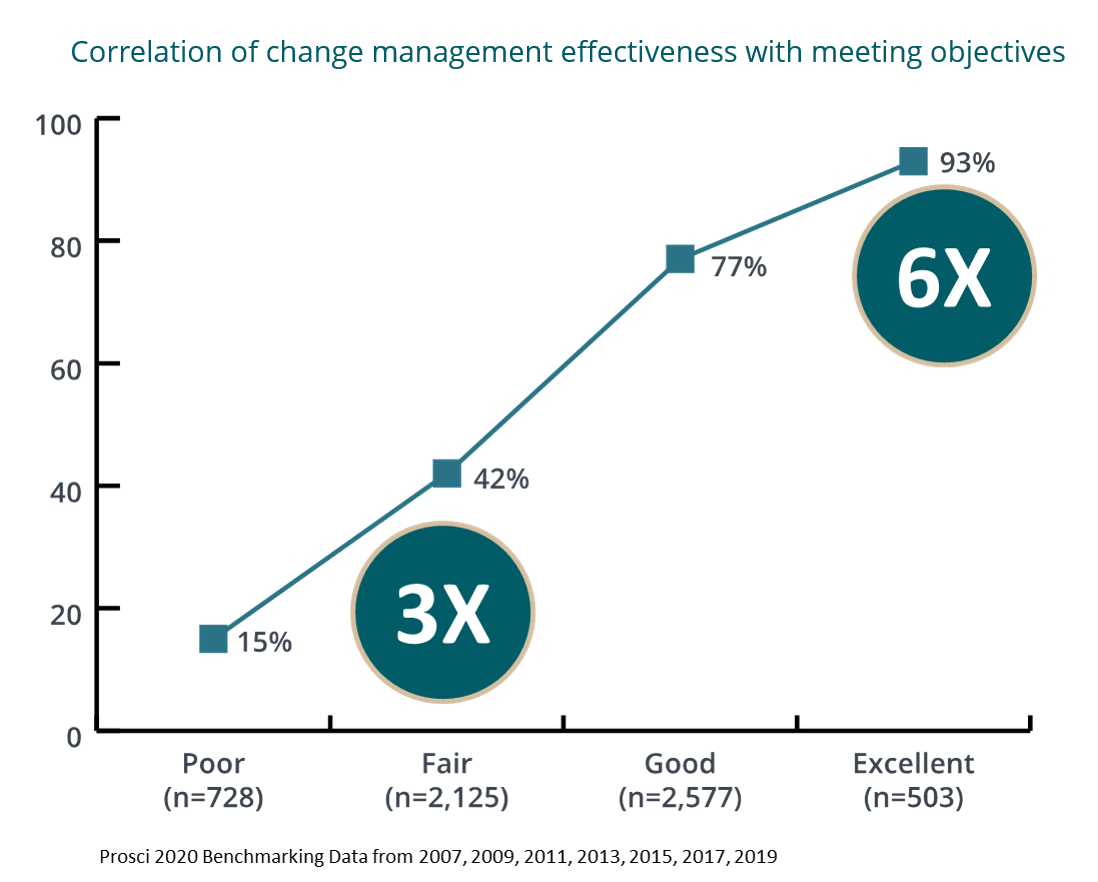Change is happening at an accelerated rate in today’s business environment. However, organisations still seem to encounter some reluctance to fully invest and commit to change management.
In this blog, we offer guidance on how to demonstrate the real and tangible benefits that excellent change management can bring to your organisation so that you can make the case for change to your boss or decision makers.
Start With the Basics - Understand Change Management
Understanding Change Management has never been so crucial. It’s the people in your organisation that fundamentally make your business – and most people don’t like to be forced out of their comfort zone. Understanding what change management is and the benefits it derives will ensure that you can present Change Management as a “must have” and not a “nice to have” on your projects.
If you’re just starting out or need others to understand more about change management, start by reading the Introduction to Change Management guide.
Justifying Change Management
Prosci's Best Practices in Change Management highlighted that 76% of participants indicated that they have to justify change management to their leadership team.
One way to justify the value of Change Management to your team is to create an awareness of the real and tangible business benefits it can bring.
You will only receive the buy-in and investment necessary to apply change management if you can show that the real and tangible benefits of change management outweigh the costs.
The 5 Business Benefits of Change Management
Here are five benefits that can be drawn upon to make your case for change management:
- Three people-side ROI factors: faster speed of adoption, higher ultimate utilisation and higher proficiency. Read more here.
- Cost avoidance: change management is a cost avoidance tactic; poorly managing change is costly to the project and the organisation.
- Risk mitigation: the project and the organisation are all put at risk when change is poorly managed; adopting change management is an effective tool to mitigate risks.
- Benefits realisation insurance: identifying how much of the project ultimately depends on your people doing their jobs differently, with change management you provide benefits realisation insurance through employees adopting better to change.
- Probability of meeting objectives: as data has shown, projects with an effective change management process in place are more likely to meet objectives, stay on schedule and stay on budget.
Assessing your Change Management
Identifying the benefits of change management activities is a crucial factor in ensuring it is effective, but how do you assess the impact and effectiveness of them?
As identified by Prosci's Best Practices in Change Management, one of the simplest tools for demonstrating the value of change management is the strong correlation between change management effectiveness and project outcomes.
Using combined data from years of bench-marking studies, Prosci found that projects with excellent change management effectiveness were more than 6 times more likely to achieve project objectives than projects with poor change management effectiveness, 93% to 15% respectively. Excellent change management also correlated positively with staying on schedule and budget.

The data is abundantly clear – the better we apply change management, the more likely we are to deliver on project objectives, stay on schedule and stay on budget.
Stop Talking About what you do and Start Talking about what you Deliver
It can be tiring being challenged about the value and importance of change management and increasing the commitment to change management is important if you want your project to succeed. If this sounds like challenges you face, then take a look at our live and on-demand Webinars that can help you.
